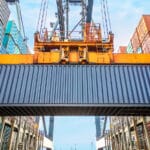
New research from Sandpiper reveals business leaders blame the US more than China for trade war, believe US should make first moves to de-escalate

Sandpiper Reputation Capital Research: Managing Reputation in the Financial Services Sector
A World Recalibrating: Strategic US Absenteeism is Accelerating ASEAN’s Regional Integration
May 2025

On 3 May, both Australians and Singaporeans went to the polls, with regional observers closely monitoring their respective federal and general elections for domestic implications and broader geopolitical impact.
Just days earlier, on 30 April, President Trump marked his hundredth day in office – during which his administration has had deep impacts across Asia. In that time, he has introduced blanket tariffs on major trading partners, suspended some targeted levies, and publicly questioned the value of multilateral trade agreements.
ASEAN foreign ministers have warned that these steps “undermine trust in the global system” and fuel uncertainty in cross-border commerce. With ‘America First’ subsidies and bespoke trade deals taking priority, export-reliant economies across Asia are asking how much they can still depend on Washington.
Early tariffs have hit Southeast Asia hard. Vietnam faces 46 per cent duties, Cambodia and Thailand are at 49 and 36 per cent respectively, and even traditionally duty-free Singapore now sees a 10 per cent baseline charge. Reactions range from formal protests to urgent lobbying missions in Washington. Malaysia’s prime minister, speaking as ASEAN chair, has urged “a united front” – but real collective measures remain scarce.
ASEAN’s Quiet Consolidation
Far from waiting out US policy swings, ASEAN has already been leaning in on its own integration to cushion international headwinds.
- Financial Safety Nets. The Chiang Mai Initiative Multilateralisation (CMIM) has grown into a US $240 billion regional swap arrangement, now with faster draw-down rules and local-currency options to cushion shocks. In March 2025, ASEAN+3 finance chiefs agreed to boost CMIM’s paid-in capital and streamline governance. These moves will make funds available more quickly in a crisis.
- Supply-Chain Resilience. ASEAN has revived talks on a bloc-wide digital trade pact to standardise e-commerce rules and data flows. In autos, members are mapping an end-to-end EV battery value chain, linking mineral producers to vehicle assemblers. Agri-tech partnerships are sharing precision-farming tools from Singapore labs with rice exporters in Vietnam and Thailand.
- Energy Cooperation. Pilot links like the Lao-Thailand-Malaysia-Singapore Power Integration Project (LTMS-PIP) are proving that cross-border grid sharing is feasible. The project shows that flexible governance and alignment across technical, legal, and commercial regimes can enable practical regional integration. ASEAN also aims to knit together a regional power grid by 2045.
At their 10 April meeting, ASEAN Economic Ministers (AEM) emphasised their “common intention to engage in a frank and constructive dialogue with the US to address trade-related concerns”. Together, these steps show ASEAN moving from loose cooperation toward tight policy alignment, pooling financial, digital and energy resources to offset US strategic absenteeism and build a more self-reliant and integrated market.
Why This Matters to Businesses
ASEAN’s ongoing evolution into a strategic bloc rewrites the playbook for investment and risk management. Companies can no longer rely solely on bilateral free-trade agreements; they must now navigate common sets of rules covering everything from digital commerce, to financial oversight to energy policy across the region.
As supply chains reorganise, global firms are increasingly sourcing materials, manufacturing and assembly within Southeast Asia’s integrated market. At the same time, rapid political shifts make robust geopolitical tools essential – scenario-planning frameworks, real-time monitoring of ASEAN communiqués and deeper ties with regional policymakers will be key to staying ahead.
A Future Shaped in the Region
While headlines focus on Washington, the real story is ASEAN’s quiet fusion. The bloc’s collective upgrades are more than backstops. They form a new, proactive blueprint for growth and security. Businesses that adopt this regional mindset today will gain the advantage in tomorrow’s ASEAN market.





